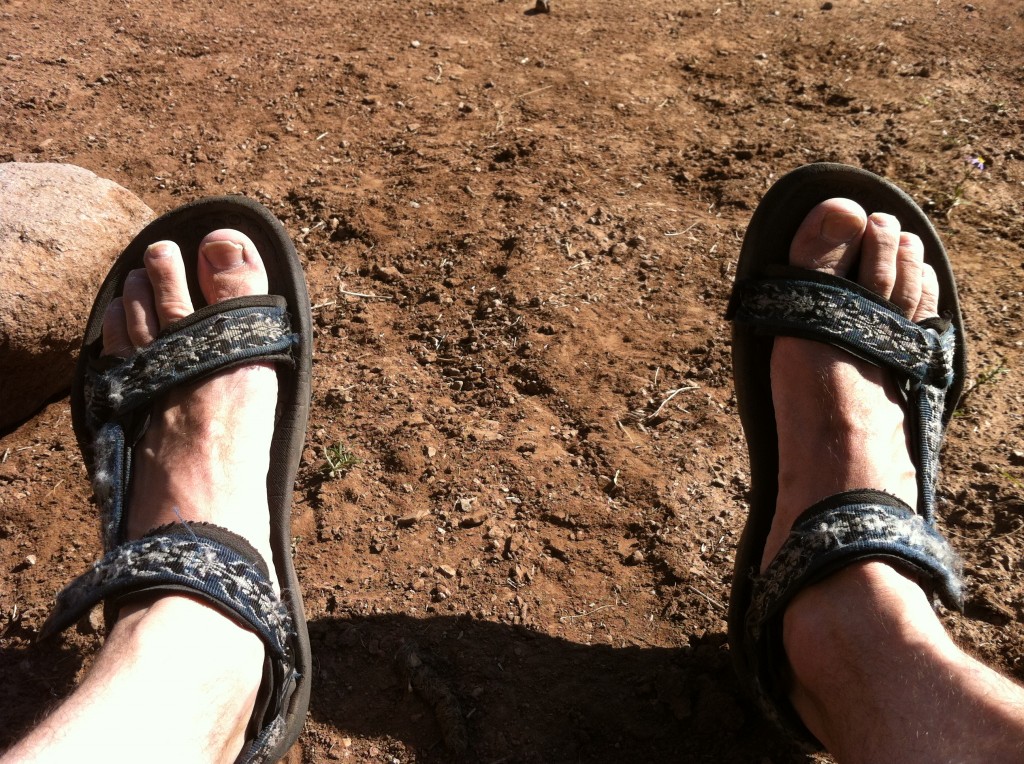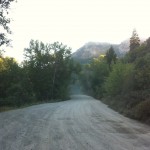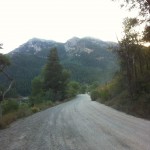I’ve been thinking for years about getting back into film photography including processing my own film. These days that seems quite anachronistic and I was wondering whether anyone even still did it – while at the same time I was hopeful that some of the gear was cheaper than it used to be. I did a little research, much of which is preserved in the links on my wiki, and discovered that film is alive and well as sort of a cult of traditional photography made up of artists, advanced amateurs, a few professionals. The artists seem to scan their own negatives and slides, the professionals mostly seem to send theirs off – of course some of the artists consider themselves professional photographers and some of the professional photographers likely consider themselves artists.
20 years ago when I was doing my own black & white and color reversal (slide) processing and shooting some color and sending it off the lab like most people – now, nearly everyone seems to be shooting either B&W or color reversal, with a few shooting both regularly. Practically nobody I found on he web is shooting color negative film, even those who are sending it out for processing – there are good reasons for this but this article will have enough diversions without discussing film that much. Additionally, in contrast to 20 years ago, a huge proportion are shooting medium format, or “MF”, (almost entirely 120/220, with a very few actually respooling 620), of course that may not be many more than 20 years ago, it’s just that they now make up such a large percentage of film photographers because so few people are shooting 35mm film anymore – it’s not really competitive with digital for many applications and it’s certainly not as easy for amateurs and family snapshots, but I don’t really care what’s competitive. Many of the people who are shooting MF are also mixing in some 35mm but 20 years ago MF was the great barrier through which only studio professionals and artists passed, often never to return.
The biggest difference from 20 years ago though is, as I had hoped, the price. Film is no cheaper but not much more expensive, either and processing is more expensive though maybe not in adjusted dollars. But film cameras, on the other hand, are very inexpensive with the exceptions of a few elite cameras and some highly collectible ones, and because most of the application is artistic, a multi-thousand dollar camera isn’t necessary – and what was multi-thousand dollar camera 20 years ago may now only cost a couple hundred plus lenses, even new out of the box. Lenses are still expensive, partly because they are so easily damaged but largely because the big camera companies have kept their lenses relatively compatible, so they’ve held their value; though prime lenses, especially the basic ones that often come with the camera, are reasonable enough that one can pick up a very good system for under $100 in many cases. Some people even specialize in taking artistic pictures with cheap cameras. Even more, twin lens reflex (TLR) cameras are a great opportunity, they are MF and wicked cheap. 35mm range finders (RF) are also excellent buys. I used to think they were for the less advanced, now I understand they can be very serious cameras, even those without interchangeable lenses. – I started wondering where I put my old Chinon 35EE which continued to take good pictures even after I fell on the ice in Korea 21 years ago and the back broke open and had to be held shut with duct tape (I even salvaged most of the pics from the roll that was in it! – So, off to eBay; particularly as folks don’t do yard sales around here.
I submitted ridiculously low bids on several items on a whim to see what happened and of course nothing did. Matt Denton suggests bidding early to “get your name on the board” and then waiting until the end to bid again, I tried that and got a nice little Argus Argoflex E for $18.53 plus $12 shipping last week – but I might have gotten it even cheaper if I’d read another guide earlier as I’ll discuss below. The Argie got here very quick and although it has a few issues with the aperture and shutter, there are instructions on Matt Denton’s site and some photos of the guts on Marcy Merrill’s Junkstore Cameras site to explain the necessary service and repairs. But what I really wanted, based on everything I’d read, was a Yashica or maybe a Mamiya. The latter have, nearly unique among TLRs, interchangeable lenses; however Ken Rockwell says he had poor experience with them. But Ken, Matt, and Karen Nakamura all speak positively of the Yashica TLRs, either the Yashicaflex D/635 (the 635 is just a later D with the ability to shoot 35mm as well, a pointless gimmick, especially today, but otherwise identical to the later Ds which had particularly good glass for what was billed as an amateur camera), or a Yashica-Mat, which was the professional TLR line from Yashica. The original Yashica-Mat and the Yashica-Mat LM and EM had darker viewing lenses compared to the 12, 24, 124, and 124G. The Yashica-Mat 12, 24, 124, and 124 G were really all the same camera but for a few inconsequential differences, the largest being that the Yashica 12 only took 120 film and the Yashica 24 only took 220, whereas the 124 and 124G took both. Everyone says that the 124Gs are overpriced versus the 124s but, at least on eBay, I didn’t see a substantial difference with apparently quality cameras from sellers with decent ratings running between $100 and $150. Yashica 12s and 24s are much less common and seem to price only slightly lower. Because 220 film is not as readily available and comes in a much narrower selection of speeds and types than 120 film, the 24 is of limited use and the 12, 124, and 124G are all of nearly equal value for actual photography (as opposed to collecting). So, I made up my mind to look for a decent 12, 124, or 124G at a reasonable price but that I would consider an LM, EM, or Yashicaflex D/635 under $75 including shipping. Fortunately, before I bought, I read Ken Rockwell’s guide to eBay.
Anyone thinking of buying on eBay should read the whole thing, but there are basically three rules: 1) never ever bid until the last moment, 2) when you finally place your bid, bid as much as you would be willing to pay less shipping – or put another way, bid the amount which if you saw anyone bid anything more on that item you would say “that was stupid”, and 3) never bid more than 80% of what you can get it for new (not a problem with TLRs only the Rolleis are still in production and they are way out of my range). That helped a lot but another point in his advice was what really got me what I wanted (I hope, I haven’t seen this one yet). He says to select items you want to bid on based on a descending priority of factors: 1) the rating of the seller, if the seller is rated low (which he defines as less than 99.6%) don’t bid no matter how rare the item is – but on the other hand a high rated seller may be worth the risk even if there’s little information, 2) the photos, 3) the description – reading mainly to see if the seller is forthcoming about problems, showing the seller’s honesty. He basically says to ignore the quality of the writing or even whether it’s intelligible – noting that many sellers don’t have any idea what they have. He insisted there are no deals on eBay anymore but I think that’s only true if you assume everyone follows his advice; as I shall now describe:
Shortly thereafter (as in, within hours), I came across this listing, with a minimum bid of $25 and no bids, closing about 3 days hence, from a seller with a 100% positive feedback (albeit not very many sales, but the seller was from the US and not from NY or Chicago and wanted payment via PayPal, so I wasn’t too worried about a scam or stolen camera ring – especially for a TLR):
“yashica 15 twin lens reflex”
Well, I had been doing a lot of research on old cameras over the past week or so, especially TLRs, and Yashicas had made no small part of that, yet I had never heard of a “Yashica 15” and it didn’t fit with the 12 and 24 and 124 naming convention, because on a 6×6 cm sheet of film one will get 12 exposures from a roll of 120 and 24 exposures from a roll of 220 – if I remember right you might get 15 exposures from a roll of 120 if you were shooting 645 (6 x 4.5cm), but that’s generally only done in TLRs with modifications or gimmicks.
So, I looked at the pictures – well there was only one, just a frontal shot and not very much detail but it clearly said “Yashica-12” on the camera.
Then, I read the description, it read as follows:
“the cover over the glass is bent and is some aggravating to open the cmaera hasnt been used in over 40years .it is no in like new condition,”
I mulled over the last clause, it sounded like the camera was “not in like new condition”! But finally I settled on Ken’s theory, the description is largely irrelevant and the seller’s marketing skill and even grammar have no correlation to the quality of the product or the seller’s service. I wrote to the seller, not because I wanted clarification but because he said he shipped via UPS and I wanted to see if he would ship to an APO (which requires shipping by the US Postal Service). He replied that he would but that “the camera might need some minor repairs”. Hmm, since he volunteered that I thought I’d better ask what repairs he was thinking of. I asked a few detailed questions about the shutter and the lenses and asked him what he thought might need repair. He replied to me (but did not post his answer to the listing) that basically everything was fine except that the viewfinder hood was “sprung” and he reiterated his return policy. I was on it. There was one bid in now at $25, I waited. 5 minutes before bidding ended, the bidding remained at $25, I logged out and logged back in to ensure I wouldn’t have a problem. 1 minute before the bidding ended I reloaded the page to ensure I had the time right, still bidding was at $25. 10 seconds before the close (I have a slow connection) I placed a “max bid” of $101. The way eBay works it placed a bid for me at $26 and then when 5 seconds later another bidder bid $33 it raised my bid to $34 and the auction closed. Sweet, $34 plus $11 shipping is bringing me a Yashica 12*. Thanks Ken Rockwell for your help!
*Actually there are a few ancillary fees from PayPal and eBay that are of little consequence since they are percentages of the selling price.











































